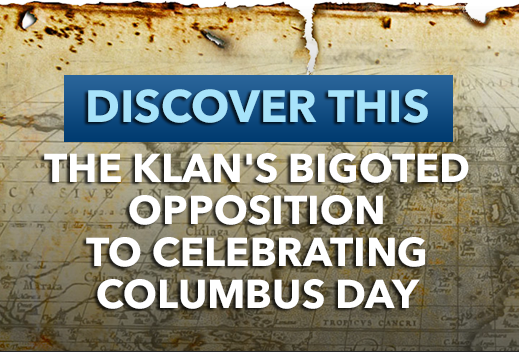
Christopher Columbus’ voyages to the New World linked Europe and the Americas and began a new age of exploration that laid the foundations for the America we know today.
CHRISTOPHER COLUMBUS, AN AMERICAN ICON
Christopher Columbus, an Italian explorer and navigator, is credited with discovering America in 1492. When he sailed into the New World and encountered its native civilizations, he effectively opened the way for trade, cultural exchange and interaction between the nations of Europe and the peoples of the Americas.
Born in 1451 in Genoa, a republic now part of Italy, Columbus first went to sea on trading voyages as a teenager. As a young adult he moved to Portugal, where he gained valuable seafaring experience. He relocated to Spain in 1485 as he developed a remarkable idea that would forever change the world.
Asia was a prized trade destination for its gold and exotic spices, but overland routes to get there were long and dangerous. Educated people of his day knew the earth was a sphere, so Columbus devised a plan to find a faster and safer route to Asia by sailing west across the Atlantic. A deeply religious man, Columbus also longed to introduce Christianity to the people of Asia.
Columbus won the sponsorship of Spanish monarchs Ferdinand and Isabella. In August 1492, he and his crew set sail in three ships — the Niña, the Pinta and the Santa María. After 36 days at sea, Columbus made landfall in the present-day Bahamas Islands, where he first made contact with the native population. He and his crew then sailed on to the Caribbean islands of Cuba and then to Hispaniola (present-day Haiti and the Dominican Republic), where he made friends with a native Taino tribe led by Chief Guacanagarí. There he established a settlement, which he named Navidad.
Columbus returned to Spain to share the news of his discovery. The following year, he sailed again to the New World with a much larger fleet and crew. They found the settlement on Hispaniola destroyed and the colonists massacred. Guacanagarí blamed rival tribes and allied with Columbus in battling the tribes responsible.
Leaving his two brothers to build a new settlement and govern Hispaniola, Columbus explored the Caribbean islands further before venturing home to Spain.
On his third voyage, Columbus explored parts of the mainland of Central and South America before returning to Hispaniola. There, he found the settlers in rebellion and complaining about his brothers’ poor governorship. Columbus made concessions to quell the rebellion, allowed its leaders to return to Spain, and enforced harsh punishments on those Spaniards who persisted in mistreating the native people. Reports of trouble in Hispaniola provoked the Spanish monarchs to send a representative, the ambitious Francisco de Bobadilla, to investigate the claims. Bobadilla arrested Columbus for punishing his own men and sent him back to Spain. The monarchs eventually acquitted Columbus of all charges.
After Queen Isabella’s death, King Ferdinand allowed Columbus to return in 1502 to the New World, where – after exploring the eastern coast of Central America – he was shipwrecked on Jamaica. After a long wait, the governor of Hispaniola sent a rescue party, but he would not allow Columbus to come to the island. Instead, Columbus was shipped back to Spain, where he died in 1506.
Columbus was a man of faith and courage who was driven by lofty goals. Although he never actually found the western route to Asia he sought, his achievements would eventually lead to the establishment of entirely new nations, including the United States.
© 2017 National Christopher Columbus Association. All Rights Reserved.

